
There are four solar ground-based observatory programs selected by NASA/HSO Data Support to support PSP perihelia passages in 2019-2020. Scroll down for a list all ground-based support. Space-based supporting missions can be found here.
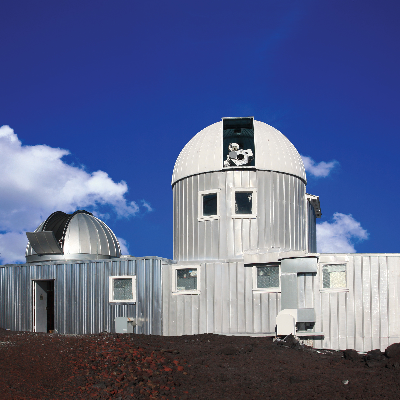
The COSMO/K-Coronagraph (K-Cor) is operated at the Mauna Loa Solar Observatory (MLSO) and images the solar corona over the height range from 1.05 to 3 solar radii in white light polarized brightness (pB) with a 15s cadence. During the Parker Solar Probe perihelia KCor will provide the following data products: calibrated pB images, line-of-sight (LOS) coronal densities, pB running differences, and high contrast pB images and movies. Ancillary science and engineering data products and IDL visualization and analysis tools will also be made available to facilitate analysis of KCor images. MLSO operates every day, weather permitting, from approximately 1700 to 0200UT.
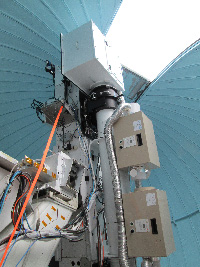
The Parker Solar Probe (PSP) is going where no spacecraft has gone before to directly measure properties at the source of the solar wind. The National Center for Atmospheric Research (NCAR) Mauna Loa Solar Observatory (MLSO) provides unique observations of the solar corona. The MLSO coronagraphs were designed to meet the primary research goal to understand the Sun s continuous and dynamic release of magnetized plasma and energy into interplanetary space.
This goal is congruent to the science goals of the PSP Mission. In particular, the MLSO COSMO K-Coronagraph (K-Cor) is the only existing instrument that images the corona over the height range from 1.05 to 3 solar radii and, thus, fills the very low-to-middle corona gap in space-based observations needed to connect the low corona to Parker Solar Probe (PSP) observations. K-Cor data enhance the science goals of the PSP mission by providing global context images of the density and morphology of the low corona in magnetically closed and open regions. Moreover, K-Cor data are ideal for tracking the onset and early dynamic evolution of Coronal Mass Ejections (CMEs). Rapidly accelerating CMEs in the very low corona are capable of driving shocks that accelerate particles. These data contribute important and distinct information that connect the energy input into the low corona with changes in the organization of closed and open magnetic fields that drive the structure of the heliosphere.
The data are directly relevant to the Parker Solar Probe (PSP) science goals: tracing the flow of energy into the corona to produce the solar wind; determining the structure and dynamics of the magnetic field and plasma at the sources of the wind; and exploring mechanisms that accelerate and transport energetic particles. MLSO measurements of the plasma density and magnetic field morphology in the low corona will help connect and interpret the novel PSP in-situ measurements of the plasma and magnetic field at the birthplace of the solar wind. We seek funding to provide NASA with K-Cor ground-based coronagraph Level-0, Level-1 and Level-2 observations, including a new line-of-sight density product and running subtractions that meet NASA standards and requirements. We will provide K-Cor instrument and processing documentation to meet NASA requirements, including ancillary science, engineering and weather data products. HAO will provide K-Cor data visualization and analysis tools for community distribution in support of the PSP perihelion passages over the coming year.
In addition, NCAR will deploy the Upgraded COronal Multi-Channel Polarimeter (UCoMP) to MLSO at the end of 2019. UCoMP will record the intensity, and linear polarization of seven coronal emission lines to produce a variety of data products, including magnetic field azimuth and Doppler velocity images, spanning a temperature range from 800,000 to over 3 million degrees K. Since the UCoMP processing pipeline is currently under development, NCAR/HAO will cover the cost of providing NASA SDAC with the new science observations from UCoMP as they become available in 2020 to ensure that these new data are available to the PSP community. Funding of this K-Cor work will provide NCAR/HAO with the knowledge and experience required to leverage the costs to HAO of modifying the UCoMP processing to meet NASA requirements.

New Jersey Institute of Technology (NJIT) has built, and now operates the largest aperture ground-based solar telescope in the world the 1.6-meter Goode Solar Telescope (GST) at the Big Bear Solar Observatory (BBSO). GST is the highest-resolution operating solar telescope built in the U.S. in a generation, and it enables us to produce diffraction-limited resolution data of an order of 0".1, as well as spectroscopic and polarimetric measurements in the photosphere, chromosphere, and on to the base of the corona, targeting at the fundamental nature of solar activity and the origin of space weather. BBSO has actively developed requisite instrumentation to provide unique complementary and supplementary support to various NASA solar space, rocket, and balloon missions. Since its regular operation in 2010, GST has routinely operated in campaigns with NASA Hinode and IRIS missions by targeting the same observing regions or solar events and offering the highest-resolution spectroscopy and spectro-polarimetry measurements of the solar atmosphere.
We propose to bring GST observations in a campaign mode to support the NASA Parker Solar Probe (PSP) mission during its perihelia in 2019 and 2020, by providing unique high-resolution observations and critically complementary information on the photosphere and chromosphere at the source regions of solar wind acceleration and heating of solar corona. During current solar minimum, the most relevant scientific contributions to the NASA PSP mission include the study of individual events such as coronal hole jets and statistical investigation of small-scale magnetic reconnections, which are essential for understanding the energy and mass supplies of coronal heating and solar wind acceleration. The proposed effort will include the acquisition, processing, and archiving of high-resolution imaging spectroscopy and polarimetry data generated with GST requisite instruments. We will optimize our existing BBSO Data Processing/Pipeline System to generate level 0, level 1, and level 2 dataset in compliance with the NASA Solar Data Analysis Center (SDAC) s requirement. We commit to deliver every processed set of observations and requisite documentation to SDAC no more than 90 days after the respective perihelion. Meanwhile, the data and metadata we provide will be made available to the public via the Virtual Solar Observatory (VSO).
GST campaign observations with the NASA PSP mission as proposed here, are explicitly and highly relevant to the main scientific objectives of its mission, Trace the flow of energy that heats and accelerates the solar corona and solar wind, and Determine the structure and dynamics of the plasma and magnetic fields at the sources of the solar wind.
BBSO plays a crucial role in training the next generation of scientists who build instruments and develop modern data analysis tools. One junior postdoc will be supported to conduct the GST observation campaign with the PSP mission. High-resolution data coupled with modeling and analytical tools, will aid comprehensive studies of the origins of the Sun s activity and precise prediction the variations in the space environment. The collected data have been and will continue to be used in many Ph.D. theses. Our data are fully open to the scientific community, and a substantial portion of GST observing time is open to the community, as well.
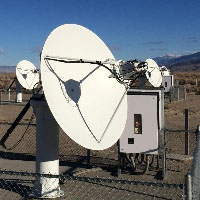
The Expanded Owens Valley Solar Array observes the full disk of the Sun at all times when the Sun is >10 degrees above the local horizon, which is season dependent and ranges from 7-12 hours duration centered on 20 UT. During January, coverage will be 16-24 UT daily, 7 days/week. EOVSA will provide microwave spectra and imaging at up to 451 frequencies between 1 and 18 GHz, which is well suited to the temperatures, densities, and magnetic field strengths of the lower corona and upper chromosphere. Full disk images at 6 selected frequency bands centered at 1.4, 3.0, 4.5, 6.8, 10.2, and 13.9 GHz will be provided once per day, calibrated in brightness temperature. Total power full-Sun-integrated spectrograms calibrated in solar flux units will be provided at 451 frequencies and 1 s time resolution. Similar cross-power spectrograms will also be provided, which have much better sensitivity to weak bursts. EOVSA will also provide quick look images and spatially-resolved microwave spectra of any bursts that are identified in the cross-power spectra. Such spatially-resolved spectra can be analyzed to provide quantitative diagnostics of the magnetic field, plasma, and particle energy parameters in the burst source.
The Expanded Owens Valley Solar Array (EOVSA) provides unprecedented microwave imaging spectroscopy in the range 1-18 GHz, with unique sensitivity to particle and plasma parameters in active regions and flares, including number of accelerated electrons and their energy distribution, magnetic field strength, and thermal temperature and density diagnostics. The ability to image and spatially resolve these key parameters is essential to characterize the solar origin of plasma and particles that Parker Solar Probe samples in situ. EOVSA observes the full Sun for 7-13 h every day, depending on the season, to provide the only currently available sensitivity to high- energy nonthermal electrons. EOVSA's microwave spectra, time profiles, and imaging are available at 451 frequencies at 1-s cadence. Hence, it's data are highly complementary to photospheric magnetic field and coronal EUV data from Solar Dynamics Observatory by extending our understanding the solar context to the highly nonthermal component. We propose to provide calibrated data products to the Solar Data Analysis Center (SDAC) in the form of standard FITS images and spectra as well as quick-look movies and image sequences, covering the upcoming Parker Solar Probe perihelia in September 2019 through September 2020. Although specially coordinated observations are not needed due to EOVSA's full Sun coverage and mono-mode observing, we will create new capability by operating an automated pipeline processing system that will provide the calibrated data products with minimal lag time of order a few days. All requirements for the data products and documentation will be followed, to provide Level 0 - Level 2 (science-capable) products, and will also yield the necessary information to allow users to request additional data and analyses from our open data archive.
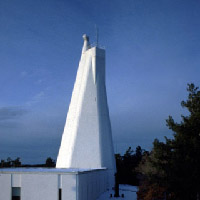
Dunn Solar Telescope will observe the lower-photosphere using continuum filters (3500Å, 4170Å, and G-band), the upper-photosphere/lower-chromosphere using Ca II K and Na I D1 filters, and the upper-chromosphere using Halpha filtergrams. This imaging data will be obtained at frame rates up to 30 fps and speckle reconstructed. The Horizontal Spectrograph (HGS) will be used for narrow-band imaging and spectroscopy for velocity information. Diffraction-limited spectropolarimetery will be obtained with FIRS; (infrared He I and Si I profiles) to directly measure the circularly and linearly polarised signals (i.e., Stokes V, Q & U). We will employ modern inversion algorithms, e.g. the SiTE (de la Cruz Rodríguez et al. 2019) to derive physical parameters in the chromosphere and the HAZEL code (Asensio Ramos et al. 2008) to extract vector magnetic fields in the photosphere and chromosphere from the spectropolarimetric signals. Level 1 calibrated data and level 2 data products, such as inversions and extrapolated magnetic fields, will be archived at the SDAC with observation logs, including instrument set-ups and parameters, and the seeing and observing conditions. All instruments will operate, weather permitting, between 1500UT and 1700UT when seeing is best, HGS and FIRS will operate a few hours longer.
The Parker Solar Probe (PSP) will answer key questions in the heating of the solar corona and the generation of the solar wind. PSP will also answer key questions on what drives the small scale structure in the solar wind, how the wind is heated, how transient events (such as CMEs) are created and propagate, and explanations for phenomenon observed in the slow and fast solar wind and their origin. Understanding the activity level and magnetic features of the Sun during these perihelion passages times is crucial for making progress in our understanding of these key problems. We propose ground-based supporting observations of the next four perihelion passages using the Dunn Solar Telescope (DST) using instruments that will cover a multitude of formation heights the solar photosphere and chromosphetre.
Our DST Observations will be obtained through use of upper-photospheric/lower-chromospheric filters (e.g., Ca II K and Na I D1) to compliment lower-photospheric (3500Å and 4170Å continuum and G- bands) and upper-chromospheric (Halpha) filtergrams. Horizontal Spectrograph (HGS) narrow-band imaging and spectroscopy for velocity information, and diffraction-limited spectropolarimeters (e.g., FIRS; infrared He I and Si I profiles), which will allow us to directly measure the circularly and linearly polarised signals (i.e., Stokes V, Q & U) originating within the data. We will employ modern inversion algorithms, such as the SiTE (de la Cruz Rodríguez et al. 2019) to derive physical parameter in the chromosphere and the HAZEL code (Asensio Ramos et al. 2008) that allows the vector magnetic fields in both the photosphere and the chromosphere to be extracted from the spectropolarimetric signals, thus forming a new high-resolution baseline for subsequent coronal NLFFF. All data will be archived at SDAC in fits format with VSO standards with observation logs, including instrument set-ups and parameters, and the seeing and observing conditions. This data will include the Level 1 calibrated data and Level 2 data products such as inversions and extrapolated magnetic field information. The Solar Community will be able to combine our DST data with complementary space-based facilities such as IRIS, Hinode and SDO and the PSP data products to make key advances in our understanding of coronal heating and solar wind generation.
Observatories wishing to profile their support of WHPI and PSP are included below (in alphabetical order).
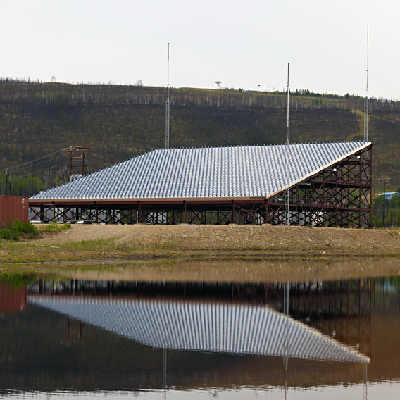
The Advanced Modular Incoherent Scatter Radars study the ionosphere by scattering high power radio waves from ionospheric electrons. The National Science Foundation Geospace Facilities Program supports two AMISR systems: the Poker Flat Incoherent Scatter Radar (PFISR) located in the auroral oval, and the Resolute Bay Incoherent Scatter Radar North Face (RISR-N) located deep in the polar cap, north of the auroral oval. The radars use the incoherent scatter technique to estimate height-resolved profiles of electron density, electron temperature, ion temperature, and line-of-sight ion velocities. The electronically-steered phased-array design of the AMISR systems allows them to cycle between multiple look directions from pulse to pulse, forming volumetric images of ionospheric structures. The radars operate both in high-duty-cycle modes for user-requested campaigns and low-duty-cycle modes on a nearly continuous basis. More information is available on the AMISR website.
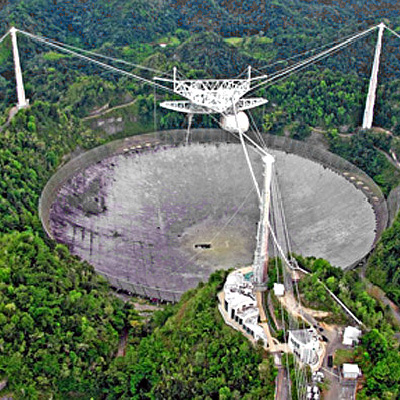
Arecibo can make interplanetary scintillation (IPS) observations in the near-Sun region, in particular below ~50 solar radii. Also planned are multi-wavelength IPS observations of the Sun and corona in different wavelength regimes during PSP Perihelion 4 on 29 January 2020. Arecibo data sets will be available for the international community for the coordinated analysis/studies with the PSP measurements.

The Baikal Astrophysical Observatory (Longitude: 105.0 E Latitude: 54.8 N) is located on the southern shore of Lake Baikal. The observatory operates the Large Solar Vacuum Telescope (LSVT) -- a refractor with heliostat and doublet objective 760 mm in diameter for high resolution observations of fine structure of solar atmosphere, two full-disk solar chromospheric telescopes (H-alpha and CaII K), and a modified STOP full disk magnetograph instrument. In winter months only the CaII K telescope provides regular observations. The Baikal Astrophysical Observatory is operated by the Institute of Solar-Terrestrial Physics (ISTP).

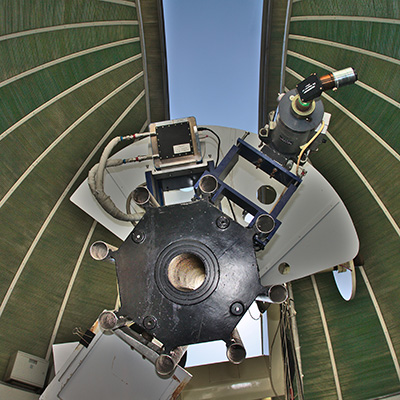
INAF-OACT Solar Telescope acquires full disc solar images in the continuum at 656.78 ± 0.05 nm and in the center of the Halpha line at 656.28 ± 0.05 nm. The images are characterized by a spatial resolution of about 2 arcsec. When the weather conditions permit, an image in the continuum and an image in the Halpha are acquired every 60 and 10 min, respectively. During observation campaigns the image cadence can be enhanced up to 1 image per minute. INAF-OACT is part of the Global High resolution H-alpha Network. H-alpha and continuum images are also provided in near real-time to the ESA Space weather portal.
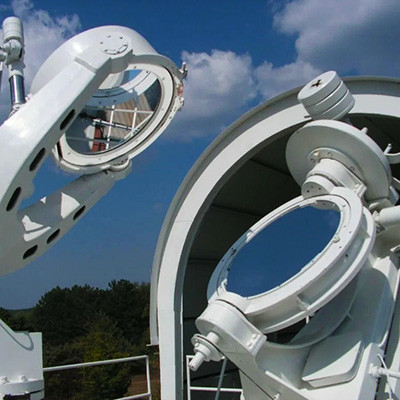
The Solar Tower Telescope-2 at CrAO is intended for monochromatic and spectral observations of the Sun. Two primary mirrors (with diameters of 450 mm and 200 mm) and three secondary Cassegrain mirrors allow creation of 80 to 300 mm full-disk solar images in the focal plane. The telescope is equipped with a slit spectrograph able to measure solar spectrum in the wavelength between 390 and 1100 nm. Photo-electron multipliers are used as detectors in the infrared region. The telescope routinely performs measurements of maximal magnetic field in sunspots and acquires full-disk spectroheliograms in He I 10830 Å spectral line.

Dunn Solar Telescope will observe the lower-photosphere using continuum filters (3500Å, 4170Å, and G-band), the upper-photosphere/lower-chromosphere using Ca II K and Na I D1 filters, and the upper-chromosphere using Halpha filtergrams. This imaging data will be obtained at frame rates up to 30 fps and speckle reconstructed. The Horizontal Spectrograph (HGS) will be used for narrow-band imaging and spectroscopy for velocity information. Diffraction-limited spectropolarimetery will be obtained with FIRS; (infrared He I and Si I profiles) to directly measure the circularly and linearly polarised signals (i.e., Stokes V, Q & U). We will employ modern inversion algorithms, e.g. the SiTE (de la Cruz Rodríguez et al. 2019) to derive physical parameters in the chromosphere and the HAZEL code (Asensio Ramos et al. 2008) to extract vector magnetic fields in the photosphere and chromosphere from the spectropolarimetric signals. Level 1 calibrated data and level 2 data products, such as inversions and extrapolated magnetic fields, will be archived at the SDAC with observation logs, including instrument set-ups and parameters, and the seeing and observing conditions. All instruments will operate, weather permitting, between 1500UT and 1700UT when seeing is best, HGS and FIRS will operate a few hours longer.

The Expanded Owens Valley Solar Array observes the full disk of the Sun at all times when the Sun is >10 degrees above the local horizon, which is season dependent and ranges from 7-12 hours duration centered on 20 UT. During January, coverage will be 16-24 UT daily, 7 days/week. EOVSA will provide microwave spectra and imaging at up to 451 frequencies between 1 and 18 GHz, which is well suited to the temperatures, densities, and magnetic field strengths of the lower corona and upper chromosphere. Full disk images at 6 selected frequency bands centered at 1.4, 3.0, 4.5, 6.8, 10.2, and 13.9 GHz will be provided once per day, calibrated in brightness temperature. Total power full-Sun-integrated spectrograms calibrated in solar flux units will be provided at 451 frequencies and 1 s time resolution. Similar cross-power spectrograms will also be provided, which have much better sensitivity to weak bursts. EOVSA will also provide quick look images and spatially-resolved microwave spectra of any bursts that are identified in the cross-power spectra. Such spatially-resolved spectra can be analyzed to provide quantitative diagnostics of the magnetic field, plasma, and particle energy parameters in the burst source.
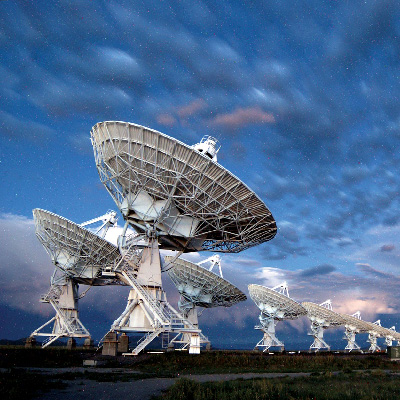
The Very Large Array consists of 27 reconfigurable radio antennas that can be deployed along a Y-shaped configuration. It has a complete frequency coverage from 1 to 50 GHz. The EVLA is in a suitable configuration for solar observing until Jan 27. A solar-minimum observation of the Sun has been approved for the current configuration and is planned to be observed on that date, 2 days before perihelion 4. It will consist of an L band (1-2 GHz) observation of the disk and a mosaic at S band (2-4 GHz). EOVSA data providing measurements of large spatial scales will be incorporated in the analysis.
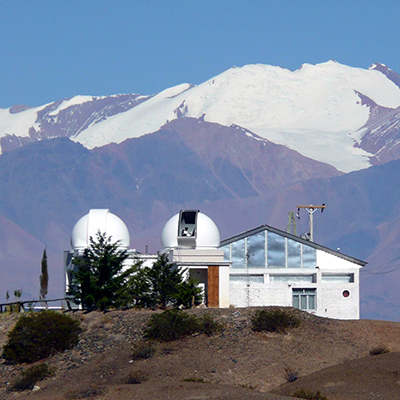
Since the Félix Aguilar Observatory MICA coronagraph is not operative, contribution to the campaign will be made with the H-alpha telescope "HASTA" and the 30THz camera. They are operated at the "Carlos Cesco" station of the "Félix Aguilar Observatory", Argentina, located at 31°48’07”S and 69°19’29”W, 2400 m above the sea level. HASTA observes full disk Sun in H-alpha center line, with a cadence of 1 image/minute in patrol mode, and 30 images/minute in flare mode, which is started automatically during a flare. The resolution is ≈ 2.0 arcsec/pixel. The 30 THz camera (10μm), property of Mackenzie University of Brazil observes ≈ 70% of the sun disk with a cadence of 1 image/second. The resolution is ≈ 2.55 arcsec/pixel.
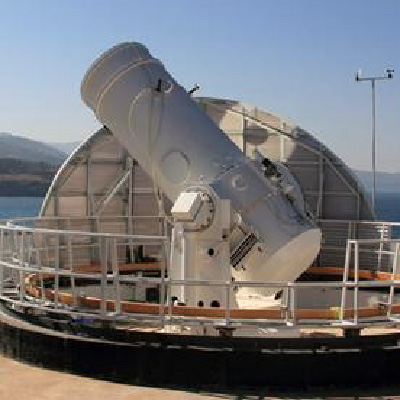
The 1m New Vacuum Solar Telescope (NVST) is operated at the Fuxian Solar Observatory (FSO). The FSO belongs to Yunnan Astronomical Observatories, CAS., China. It is located at 24°34’48”N and 102°57’01”E at an altitude of 1720 m above sea level. The NVST, the most important instrument of the FSO, has an aperture of 980mm and is one of the new generation ground-based facilities of China. This telescope has been operative since 2010. The main terminals include a high resolution imaging system based on a Lyot filter and a multi- wavelength spectrograph which has a capability to do the spectro-polarimetric observation.
During this campaign to support the NASA Parker Solar Probe in 2020 (Jan. 23rd - Feb. 4th). We will provide high-resolution images of the photosphere and chromosphere by using the imaging system from UT 1:00 to UT 8:00. The field-of-view is about 150 arcsec. The spacial resolution of the chromospheric image observed at Halpha line is about 0.3 arcsec with the highest cadence of 11s. Meanwhile, the photospheric image is acquired at the TiO-band with a 30 s cadence. The spacial resolution after the reconstruction is close to 0.1 arcsec in this wavelength.
After data acquisition, we carry out data reduction locally and provide the level 0, level 1 and level 1.5 data. Quick-look movies and images of all observations will be available to the public online two days after the data acquisition. FTS data will also be available by ftp server.

The GONG Network is a worldwide network of six identical telescopes, designed to have 24/7 observations of the Sun. The network serves multiple purposes, including the provision of operation for use in space weather prediction, and the study of solar internal structure and dynamics using helioseismology. GONG data products include full disk 2.5-arcsecond pixel velocity, intensity, and magnetic-flux images of the Sun every minute, with an approximate 90% duty cycle, enabling continuous measurement of local and global helioseismic probes from just below the visible surface to nearly the center of the Sun. High (one minute) cadence, high-sensitivity magnetograms, near-real-time seismic images of the farside of the Sun, and 2K x 2K Hα intensity images obtained at a 20-second cadence are also available. GONG is operated by the National Solar Observatory with funding provided by NSF and NOAA.
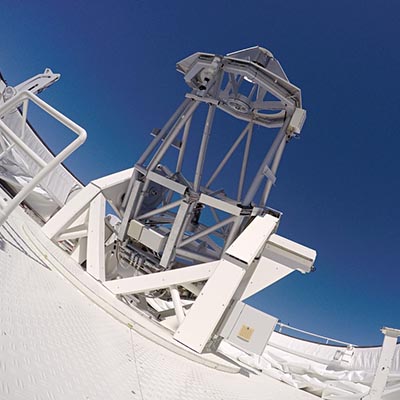
GREGOR is a 1.5-meter solar telescope located at an altitude of 2400 meters at the Teide Observatory on the island of Tenerife (Spain). It was inaugurated in 2012. Currently, its main instrument is the GREGOR Infrared Spectrograph (GRIS), a slit-spectropolarimeter which operates in the near infrared between 1.0 and 1.8 microns. The instrument can exchange the slit by an Integral Field Unit (IFU). For context imaging, currently there are three additional instruments comprising a two-camera system each: the broadband imager (BBI), the High-resolution Fast Imager (HiFI), and the M-lite Imagers.
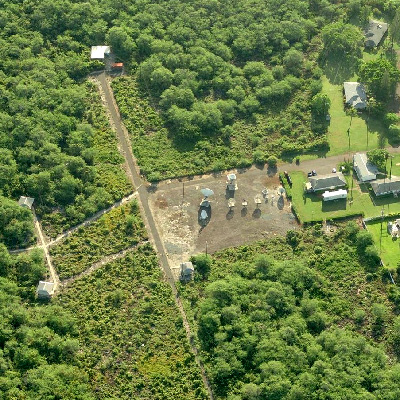
Distributed arrays of ground magnetometers remote sense magnetosphere-ionosphere current systems and are frequently used to characterize solar wind-magnetosphere-ionosphere coupling processes. Measurements from numerous magnetometer systems are available in near real-time, such as observatories operated by United States Geological Survey (Honolulu observatory shown in picture, Get data). Measurements from additional systems are available from public repositories such as SuperMAG, THEMIS/SPEDAS, and InterMAGNET. SuperMAG provides numerous plotting tools and high-level data products that are particularly useful for examining WHPI, including global activity indices and equivalent current maps. More information about US-supported arrays.
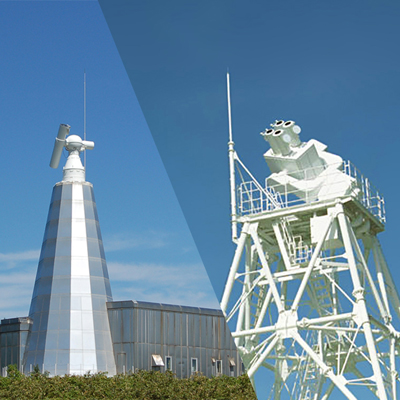
The 60cm Domeless Solar Telescope (DST) and Solar Magnetic Activity Research Telescope (SMART) are working at Hida Observatory, Japan. During this campaign, the SMART monitors full-disk solar chromosphere at 73 wavelengths from H-alpha -0.9 nm to +0.9 nm with the time cadence of 12 s, especially in order to measure the velocity field of chromospheric gas motions (SMART data). The DST also plans to perform imaging observations of the chromosphere with higher spatial resolution whose FOV is about 200 x 200 arcsec.

The Huairou Solar Observing Station is one of the key stations of the National Astronomical Observatories, Chinese Academy of Sciences. It was built in 1984 and is located on an island near the north bank of the Huairou reservoir, 60 km north to the downtown of Beijing. The main scientific objective of the station is to measure and study the solar magnetic and velocity fields at various altitudes of the solar atmosphere.
Several advanced instruments are equipped on the station. The main telescopes are as follows:
During this campaign to support the NASA Parker Solar Probe in 2020 (Jan. 23rd - Feb. 4th). We will provide photospheric vector and chromospheric longitudinal magnetic fields with high sensitivity taken by 35-cm Solar Magnetic Field Telescope from UT 00:30 to UT 8:30. The corresponding photospheric and chromospheric filtergrams are obtained at the same time. If one would like to obtain the magnetic fields with very high sensitivity, the deep-integration mode is recommended. We also provide the full-disk H alpha image with the pixel resolution of 0.85 arcsecand and the highest cadence of 5 s or even better.
After data acquisition, we carry out data reduction locally and provide the level 0 (original), level 1 (calibrated filtergram), level 1.5 (calibrated Stokes I, Q, U, V) and level 2 (magnetic field) data. Quick-look movies and images of all observations will be available to the public online two days after the data acquisition. FTS data will also be available by ftp server.
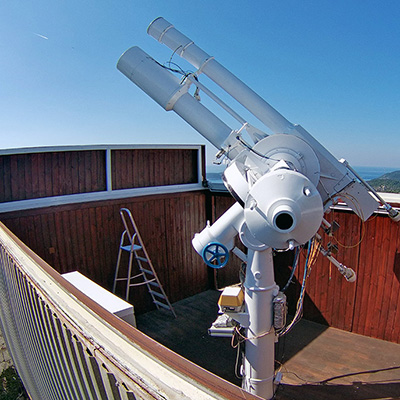
The double solar telescope at Hvar Observatory was built in 1972 based on an agreement between the Faculty of Geodesy of the University of Zagreb and the Astronomical Institute of the Czechoslovak Academy of Sciences. Since that time, continuous development on the telescope and its acquisition system followed the rapid evolution of the electronics and computers. In 1997 the original photographic material acquisition system was replaced by a video-recording system, and then again in 2004 with 1MPix 10-bit CCD camera. In 2010, the fourth generation of acquisition hardware and software was installed, together with some improvements on the optical telescope design. As a result of tight collaboration between the Faculty of Geodesy and the Institute of Physics (IGAM) of the University of Graz, Hvar Observatory implemented identical acquisition system as the Kanzelhöhe Solar Observatory. The aim is to complement Kanzelhöhe full-disc images by Hvar active-region high-resolution images..
The telescope provides a valuable tool to study rapid changes of chromospheric and photospheric features in great detail. The telescope consists of two Carl Zeiss refractors (photosphere d=217mm, chromosphere d=130mm) mounted as one unit on a German parallax mounting. Using a field of view of about 7 and 11 arcmin, its aim is to produce high resolution images of active regions on the Sun. New Pullnix TM-4200GE 12-bit CCD cameras allow time series with a cadence up to 30 images per minute. More info at the Hvar Observatory web page and Gallery.
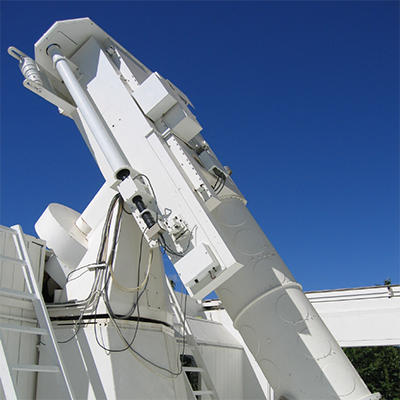
IRSOL is located in Switzerland and can provide high precision spectropolarimetric data recorded with the Zurich Imaging POLarimeter (ZIMPOL). Its Gregory Coudé telescope has an aperture of 45 cm and a field of view of 180". The spectrograph is a Czerny Turner based on a 36 x 18 cm grating with 316 rows per mm; observations are performed using orders from the 7th in the red to the 13th in the violet. The ZIMPOL system uses a photo-elastic modulator (PEM) oscillating at 42 kHz. Its optimal spectral range is in the visible. Polarimetric precision better than 10-5 can be achieved. This, however, requires to collect more than 1010 photons, which implies exposure times in the order of several minutes. The high precision in polarimetry is thus obtained at the expense of the spatial and temporal resolution. Typical targets for this high polarimetric precision are scattering polarization signals, along with their magnetic sensitivity through the combined action of the Hanle, Zeeman, and magneto-optical effects.
A line of interest to be measured during the campaign is the Ca I 422.7 nm. At the limb, this line shows the largest scattering polarization signal of the visible solar spectrum. The line-core signal is sensitive to the magnetic fields present in the low chromosphere via the Hanle and Zeeman effects. The wing scattering polarization signal is instead sensitive to the magnetic fields present in lower atmospheric regions via magneto-optical effects. Through the farward-scattering Hanle effect, this line also shows detectable scattering polarization signals at disc center.
Other lines that can be observed during the campaign are, for instance, Na I D1 and D2, He D3, Halpha, and a C2 molecular band around 514 nm. Spectropolarimetric observations of the sodium doublet at the solar limb can provide additional information on the magnetism of the upper photosphere-lower chromosphere. He D3 and H-alpha are of particular interest for magnetic field diagnostics in filaments via the Hanle effect. Observations of C2 lines at the limb can be exploited to get information (via the Hanle effect) on the unresolved, turbulent magnetic fields present in the quiet photosphere.
The following data will be made available: a) co-temporal slit jaw images, permitting to locate the exact slit position on the solar disk; b) spectropolarimetric ZIMPOL images (I, Q/I, U/I, V/I), with 140 x 1240 pixel resolution: 1.4’’ per pixel, 5mÅ – 10mÅ per pixel (depending on the wavelength observed), with a time cadence of several minutes, depending on the required polarimetric precision. Details on the data reduction performed on the raw data will also be made available.

The Jicamarca Radio Observatory is a research facility of the Instituto Geofísico del Perú dedicated to the observation and study of the ionosphere and upper atmosphere at the magnetic equator. Its most important instrument is one of the largest incoherent scatter radars in the World. The Jicamarca radar operates at 49.9 MHz and its antenna array is composed of 18,432 dipole elements covering an area of 300x300 m2. This powerful instrument can conduct measurements of the physical parameters of the equatorial ionosphere remotely as well as observations of the plasma irregularities in this region, e.g., the equatorial electrojet, the 150km echoes, and the Spread-F. In addition, the observatory is in charge of the operation of a cluster of other instruments, such as, radars, magnetometers, GNSS receivers, ionosondes, FPI, airglow imagers that complement the observations conducted with the main radar. The operation of the observatory is supported by the US National Science Foundation and Cornell University.
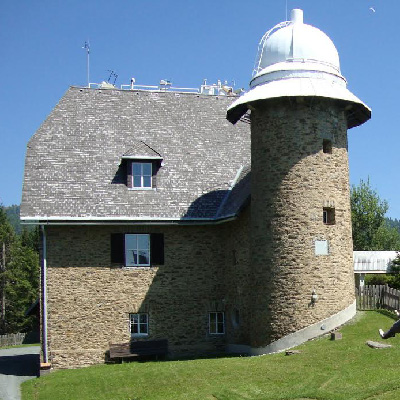
The Kanzelhöhe Observatory in Austria observes the Sun in H-alpha, Whitelight and CaII K at high cadence (10 images/minute). The observatory is part of the Global High resolution H-alpha Network and one of the main ESA ground stations for solar observations. H-alpha and Whitelight images are provided in near real-time to the ESA Space weather portal. Additionally from H-alpha images flares and filaments are detected automatically. In case of large optical flares ( > Imp. 1) an automatic alert is issued and sent to ESA and subscribed users. The image cadence can be enhanced in case of special observation campaigns (up to 4 images/second).
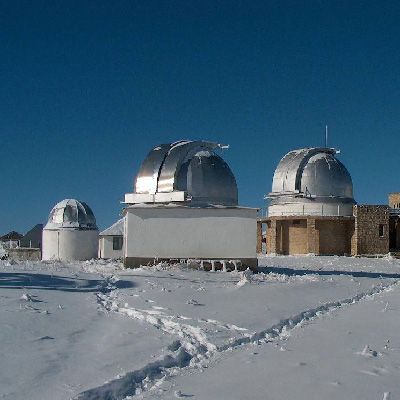
The Kislovodsk Mountain Astronomical Station of Pulkovo Observatory (43°44'N; 42°31'E, alt. 2100 m) carried out its first synoptic observations of the Sun in 1948. The daily observation program includes observations of sunspots; filaments and prominences in the H-alpha lines; spectral corona in the lines 5303A and 6374A; plages in the CaIIK line; magnetic fields on a STOP magnetograph; radio observation of the Sun at the waves of 5 and 3 cm. We also make continuous observations of the full solar disk in the center and wings of the H-alpha and CaIIK spectral lines and cadence time 1 minute. Such observations make it possible to detect CMEs. According to observations on a magnetograph, we calculate the solar wind parameters and forecast geomagnetic activity. Results of synoptic observations promptly updated on the website.

NEWRUS is a Water Cherenkov Detector (WCD) dedicated to observing the flux of cosmic rays. It is installed at the Argentine Marambio base in Antarctica, and is part of LAGO (Latin American Giant Observatory). The LAGO collaboration is a network of WCDs, with nodes located at ground level and detectors installed at different sites to cover a wide range in latitude, from Mexico to Antarctica. It records the flux of secondary Cosmic Rays (CRs) at ground level to better understand the modulation of galactic CRs in the heliosphere and the properties of solar particles of high energy, the so-called Ground Level Enhancements (GLEs).
The main science goals of this Antarctic station is to monitor space weather conditions and to observe Forbush decreases as well as GLEs. The energy range for primary protons that NEWRUS can observe is 2-100 GeVs. Real time (one-hour) data for the relative flux of CRs are provided by the group that developed and installed NEWRUS, the Argentina Space Weather Laboratory (LAMP, Spanish acronym of 'Laboratorio Argentino de Meteorología del esPacio).
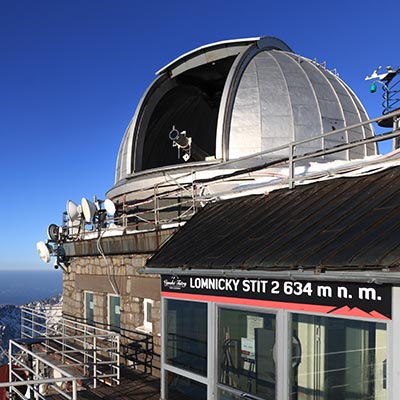
The Lomnicky Stit Observatory (LSO) is supporting PSP perihelions by performing coronagraphic measurements using the CoMP-S instrument in several chromospheric and coronal lines in the visible range of the solar spectrum. The Lyot filter of the instrument allows sequential scanning of the emission lines for the FoV limited to 460x390 arcseconds.
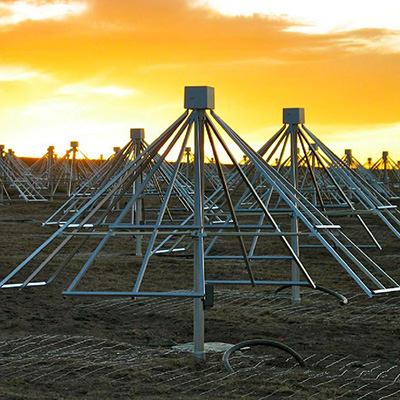
The Long Wavelength Array (LWA) is a radio telescope in central New Mexico. It is one of the few observatories to utilize relatively low frequencies (10-88 MHz). Non-imaging radio spectral observations with the LWA in the frequency range 20-80 MHz have been requested during the 4th PSP perihelion on Jan 27-30, 2020. These can be used to look for weak Type III bursts (due non-thermal electron streams associated with any activity in the corona. The time window for LWA is 2300-0600UT.
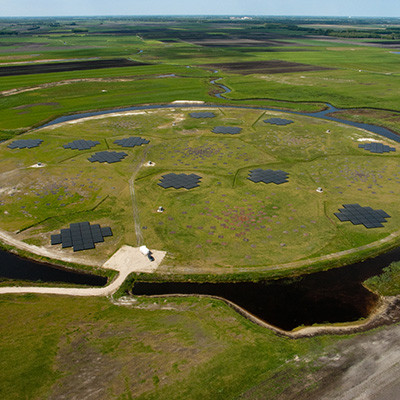
The Low-Frequency Array (LOFAR) is one of a new generation of radio telescopes. It operates over the frequency range 10-250MHz and is a phased-array system with a dense core of observing stations in the Netherlands and fourteen stations internationally from Ireland in the west to Latvia in the east. Several different observations can be run in parallel including high-cadence solar imaging (six images per second at 60 frequencies in the range 20-70MHz), high-resolution solar dynamic spectra (time resolution of 0.01s and frequency resolution of 12kHz covering the frequency ranges 10-77MHz and 110-190MHz), and interplanetary scintillation observations of the solar wind. Observations of pulsars are also carried out in an attempt to measure Faraday rotation due to the solar corona and interplanetary magnetic field, although this remains highly experimental.

The COSMO/K-Coronagraph (K-Cor) is operated at the Mauna Loa Solar Observatory (MLSO) and images the solar corona over the height range from 1.05 to 3 solar radii in white light polarized brightness (pB) with a 15s cadence. During the Parker Solar Probe perihelia KCor will provide the following data products: calibrated pB images, line-of-sight (LOS) coronal densities, pB running differences, and high contrast pB images and movies. Ancillary science and engineering data products and IDL visualization and analysis tools will also be made available to facilitate analysis of KCor images. MLSO operates every day, weather permitting, from approximately 1700 to 0200UT.

Daily full-disk observations of the solar photosphere and chromosphere started at the Meudon Observatory in 1908. Currently, two kinds of observations are performed daily with the Meudon spectroheliograph with an improved spatial resolution of approximately 2" (1.1" pixels): full-disk observations with short exposure time and prominence observations with the solar disk attenuated by an occulter in both the Halpha and CaII H and K. lines. The spectral resolution is 0.025nm and 0.015nm for Halpha and CaII, respectively. Halpha line profiles allow the computation of Dopplergrams. Full line profiles over the entire solar disk are provided as 3D data cubes and can be found, as well as classical 2D images from which they derive, at http://bass2000.obspm.fr/.
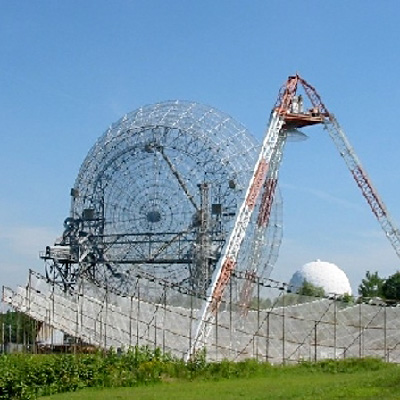
MIT Haystack operates the Millstone Hill Geospace Facility as a major NSF supported community Geospace Facility. Components include the large UHF ionospheric radar at Millstone Hill, GNSS TEC data, and the Madrigal distributed database system. The Millstone Hill UHF ionospheric radar uses a fully-steerable 46 meter antenna and a fixed vertical 68 meter antenna combined with a megawatt class transmitter to provide vertical and wide field ionospheric full altitude profiles of thermal plasma parameters over the eastern half of the North American continent.
The favorable location of Millstone Hill at sub-auroral latitudes, combined with the great operational range afforded by the steerable antenna permit observations over a latitude span encompassing the region between the polar cap and the near-equatorial ionosphere. Millstone Hill uses Thomson backscatter from ionospheric electrons to deduce height- and time-resolved plasma drift velocities, electron and ion temperatures, electron densities, ion composition, and ion-neutral collision frequencies. These parameters provide further information about the neutral gas, neutral temperatures and winds, and electric fields present in the medium. The incoherent scatter technique provides observations of many of these parameters over an altitude range extending from less than 100 km to a thousand kilometers or more. Methods have been developed that allow these measurements to be made with an altitude resolution of hundreds of meters. The complete steerability of the radar allows horizontal gradients and structure to be examined along with vertical variations. All data is placed in realtime within the Madrigal system for community access and scientific use.
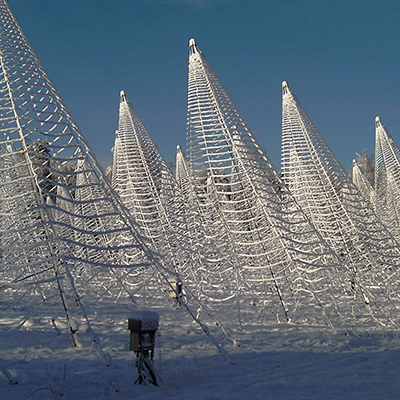
The Nançay Decameter Array (NDA), hosted at the Nançay Radio Observatory (Sologne forest, France) has observed low frequency (10– 100 MHz) radio emissions of Jupiter and the Sun daily for 4 decades. The observations have been acquired with a variety of receivers with increasing performances. Currently, 4 digital receivers operate simultaneously. This dataset now forms a unique long-term database spanning ≥ 3 solar cycles and jovian revolutions. The NDA additionally brought fruitful support to space-based radio observatories of the heliosphere, from the Voyager mission up to Parker Solar Probe and Juno spacecraft. Webpage and data access and Contact email.
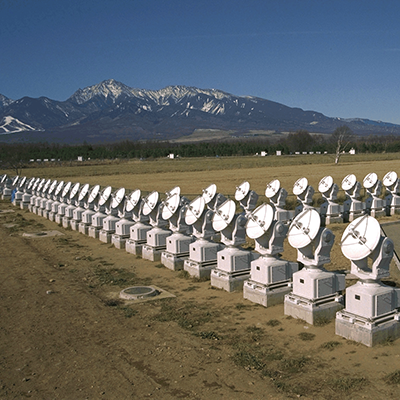
Nobeyama Radioheliograph (NoRH) in Japan is a radio telescope dedicated to observing the Sun. It consists of 84 parabolic antennas, each with 80 cm diameter, sitting on lines of 490 m long in the east/west and of 220 m long in the north/south. NoRH is expected to be operating daily throughout the 4th PSP perihelion, providing full-disk images of the Sun at 17 GHz (with 10" resolution) and 34 GHz (with 5" resolution) in the time range 2300-0600 UT.
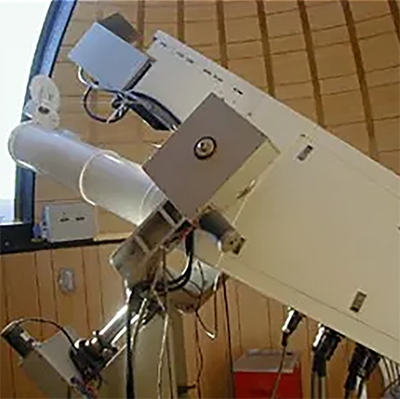
The INAF Osservatorio Astronomico di Roma in Italy will observe the full-disk photosphere and chromosphere with the Precision Solar Photometric Telescope (Rome/PSPT). This is a 15 cm, low-scattered-light, refracting telescope designed for synoptic solar observations characterised by 0.1% pixel-to-pixel relative photometric precision. The Rome/PSPT has been acquiring daily full-disc observations since May 1996. The data are taken with short exposure times and a spatial resolution of approximately 2 arcsec, by using narrow-band interference filters centered at the Ca II K line, blue and red continuum, and G-band. The cadence of observations will be enhanced during the coordinated observing campaign. The data will be available right after acquisition and application of standard instrumental calibration.
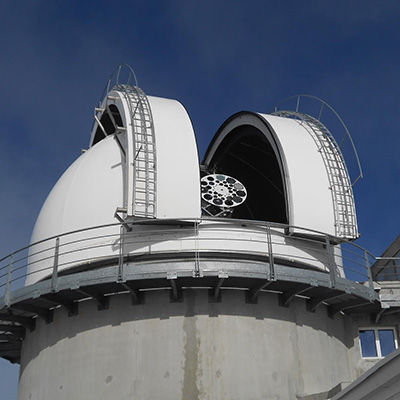
CLIMSO (Christian Latouche IMageur Solaire) is a suite of instruments installed at the Pic du Midi Observatory (2877 m) in the Pyrénées mountains in the southwest of France. It consists of two solar refractors L1 and L2, observing respectively the Hα and CaK lines, and two 20 cm-aperture coronagraphs C1 and C2 observing respectively the Hα and HeI lines. Occasionally, C2 may also observe the FeXIII line to capture the low and hot corona. CLIMSO has taken pictures continuously, weather permitting, since March 2007. All images and movies are available at the CLIMSO website
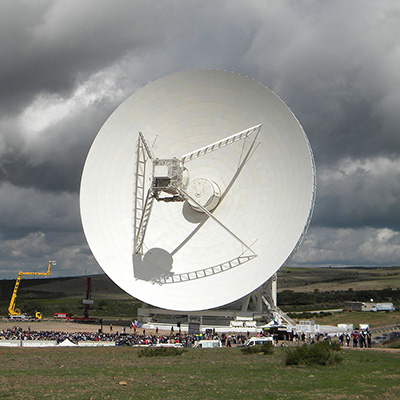
The Sardinia Radio Telescope is a 64-meter single-dish radio telescope with state-of-the-art technological capabilities. The SRT is a versatile instrument for radio astronomy, geodynamical studies and space science, which can be operated in either single dish or Very Long Baseline Interferometry (VLBI) mode. Its strengths include a large collecting area (a steerable parabolic dish with 64 meters of diameter) combined with state-of-the-art technology, allowing for a high efficiency up to 115 GHz. The optical system is based on a quasi-Gregorian dish antenna with mirrors that are shaped to minimize the standing wave that bounces between the two reflectors. Three additional mirrors, combined in a Beam Wave Guide (BWG) configuration, increase the number of focal positions. For the PSP perihelion, SRT will provide full solar imaging at 18 and 26 GHz (about 50 arcsec angular resolution). An observing session is scheduled for January 28th in the range 08-15 UT. SRT is a facility operated by INAF.
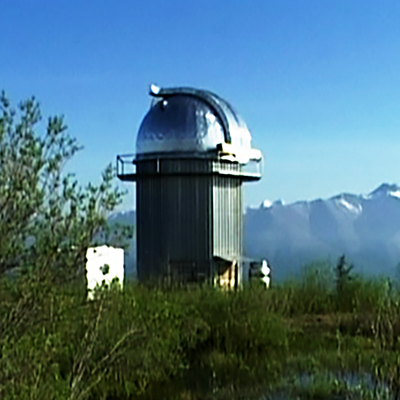
The Sayan Solar Observatory (Longitude: 100.8 E Latitude: 51.6 N) is situated at an altitude of 2000 m above sea level. It operates the Solar Telescope for Operative Predictions (STOP), which measures the large-scale solar magnetic fields. Regular full disk longitudinal magnetograms are taken with 100 arcsec spatial resolutions, but measurements with higher resolutions are possible. Horizontal Solar Telescope (coelostat, 800 mm in diameter and 20 m focal length prime mirror) is equipped with a large spectrograph and a vector magnetograph. The Large Solar Coronagraph (single lens objective with D = 530 mm and focal length – 12 m) is designed to study the solar corona in non-eclipse mode. The Sayan Solar Observatory is operated by the Institute of Solar-Terrestrial Physics (ISTP).
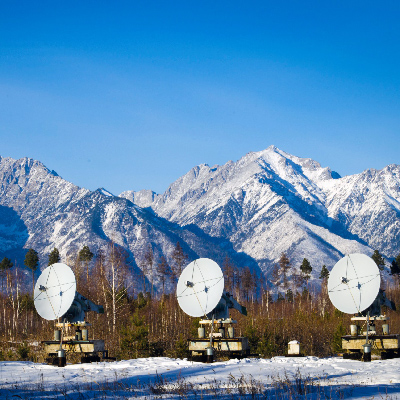
The Siberian Radioheliograph (Longitude: 103.2 E Latitude: 51.8 N) is a new multi-frequency interferometer located in the Radio Astrophysical Observatory (RAO) of ISTP. SRH is based on Siberian Solar Radio Telescope (SSRT), which operated on a single frequency of 5.7 GHz (5.2cm) and had time resolution of 2 minutes. In 2016 the SRH started operating in configuration of a T-shaped equidistant 48-antenna array with a longest baseline of 107.4 m. The SRH is capable of observing the Sun in both circular polarizations within the 4–8 GHz frequency range with up to 64 frequency channels. The frequency is switched in sweeping mode with 0.28 s cadence. The brightness temperature sensitivity is about 2000 K. Along with solar images, we provide correlation plots, which are more sensitive (0.01 sfu) and useful for monitoring daily solar activity. Solar observations are made during daylight hours from 00 to 10 UT in summer and from 02 to 08 UT in winter. Real-time full disk images and correlation plots of SRH are available at the RAO website.
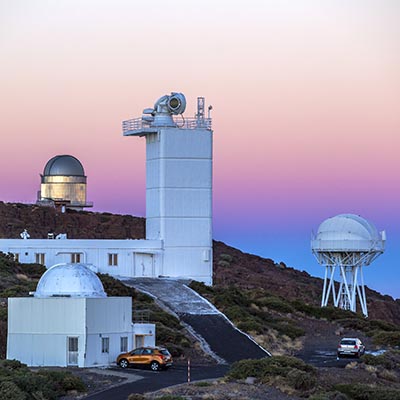
The SST is an evacuated Schupmann-refractor with an unobstructed aperture and integrated adaptive optics. It is located at the Observatorio del Roque de los Muchachos on the Canary Island of La Palma, Spain. The main instruments are the imaging spectropolarimeter CRISP (500-860 nm) and the imaging spectrometer CHROMIS (typically used for Ca H & K and H-beta) which can work simultaneously. Data with diffraction-limited spatial resolution is regularly achieved. In the blue this is 0.1”. The SST and its instrument thus does high-spatial-resolution imaging spectropolarimetry in several spectral lines selected for their diagnostic value for the solar photosphere and chromosphere. The SST is operated by the Institute for Solar Physics of Stockholm University, Sweden.